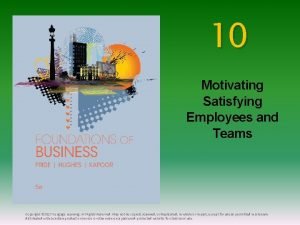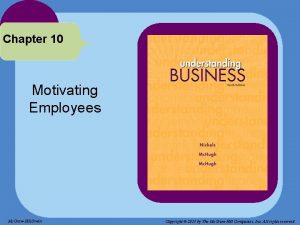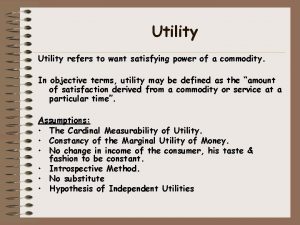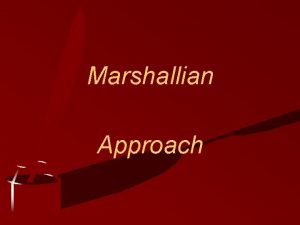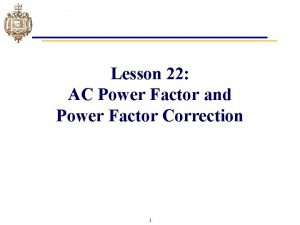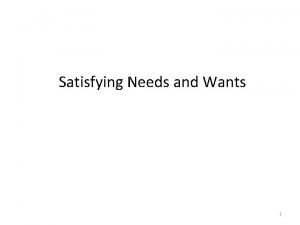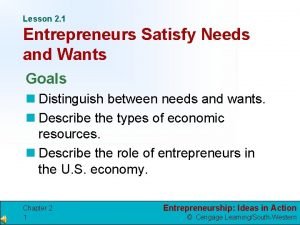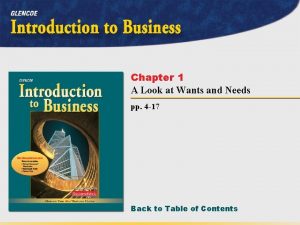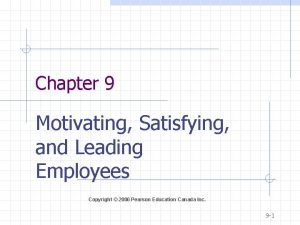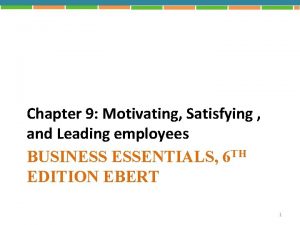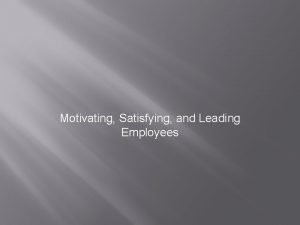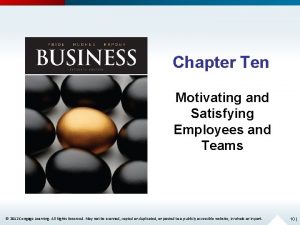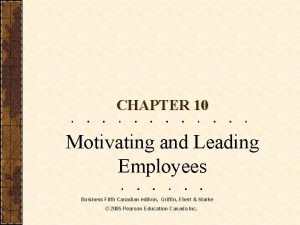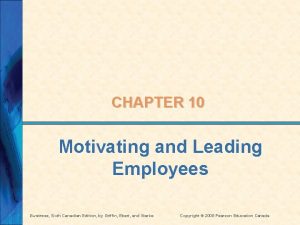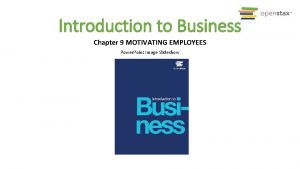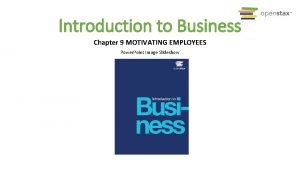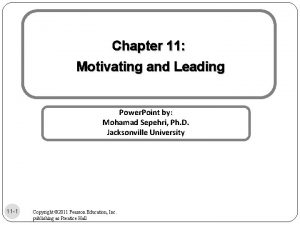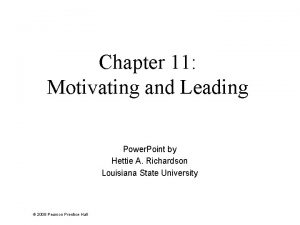Chapter 9 Motivating Satisfying and Leading Employees Power



















- Slides: 19

Chapter 9 Motivating, Satisfying, and Leading Employees Power. Point Presentation by Charlie Cook Copyright © 2005 Prentice Hall, Inc. All rights reserved.

Key Topics • Psychological contracts in the workplace • Job satisfaction and employee morale • Theories of employee motivation • Job satisfaction and employee motivation • Managerial styles of leadership Copyright © 2005 Prentice Hall, Inc. All rights reserved. 2

Psychological Contract: A Set of Employment Expectations • Contributions: Ø What does each employee expect to contribute to the organization? • Inducements: Ø What will the organization provide to each employee in return? Copyright © 2005 Prentice Hall, Inc. All rights reserved. 3

Satisfied Employees Are More Productive and More Committed • Low Turnover: Ø A low percentage of employees leave each year Copyright © 2005 Prentice Hall, Inc. All rights reserved. TURNOVER Ø An overall positive employee attitude toward the workplace MORALE • High Morale: TURNOVER Ø Degree of enjoyment employees derive from doing their jobs MORALE • Job Satisfaction: 4

Raising Morale Is a High Priority When Unemployment Is Low Copyright © 2005 Prentice Hall, Inc. All rights reserved. 5

Highly Motivated Employees Are Critical to Business Success • Motivation Ø The set of forces that cause people to behave in certain ways • Classical • Behavior: The Hawthorne Studies • Contemporary Copyright © 2005 Prentice Hall, Inc. All rights reserved. 6

The Human Resources Model: Theory X and Theory Y (Mc. Gregor) • Theory X • Theory Y Ø People are lazy. Ø People are energetic. Ø People lack ambition and dislike responsibility. Ø People are ambitious and seek responsibility. Ø People are self-centered. Ø People can be selfless. Ø People resist change. Ø People want to contribute to business growth and change. Ø People are gullible and not very bright. Ø People are intelligent. Copyright © 2005 Prentice Hall, Inc. All rights reserved. Table 9– 1 7

Equity Theory • Employees evaluate their treatment relative to the treatment of others Ø Inputs: Employee contributions to their jobs Ø Outputs: What employees receive in return • The perceived ratio of contribution to return determines perceived equity. Copyright © 2005 Prentice Hall, Inc. All rights reserved. 8

Strategies for Enhancing Job Satisfaction and Morale • Reinforcement/behavior modification • Management by objectives • Participative management and empowerment • Job enrichment and job redesign • Modified work schedules Copyright © 2005 Prentice Hall, Inc. All rights reserved. 9

Reinforcement/Behavior Modification Theory Punishment When negative consequences are attached directly to undesirable behavior. Positive Reinforcement When rewards are tied directly to performance. Copyright © 2005 Prentice Hall, Inc. All rights reserved. 10

Management by Objectives (MBO): Collaborative Goal-setting Collaborative Goal Setting and Planning Communicating Organizational Goals and Plans Periodic Review Evaluation Meeting Setting Verifiable Goals and Clear Plans Counseling Identifying Resources Copyright © 2005 Prentice Hall, Inc. All rights reserved. Figure 9– 5 11

Participative Management and Empowerment • Increasing job satisfaction by encouraging participation • Team management represents a growing trend. Copyright © 2005 Prentice Hall, Inc. All rights reserved. 12

Job Enrichment and Job Redesign • Job Enrichment: Ø Adding one or more motivating factors to job activities • Job Redesign: Ø Designing a better fit between workers and their jobs v Combining tasks v Forming natural work groups v Establishing client relationships Copyright © 2005 Prentice Hall, Inc. All rights reserved. 13

Modified Work Schedules • Work share programs • Flextime programs and alternative workplace strategies • Telecommuting and virtual offices Copyright © 2005 Prentice Hall, Inc. All rights reserved. 14

Evaluating Modified Schedules and Alternative Workplaces • Advantages Ø More satisfied, committed employees Ø Less congestion Copyright © 2005 Prentice Hall, Inc. All rights reserved. • Disadvantages Ø Challenging to coordinate and manage Ø Poor fit for some workers 15

Managerial Leadership The process of motivating others to work to meet specific objectives Copyright © 2005 Prentice Hall, Inc. All rights reserved. 16

Managerial Styles Autocratic Style Democratic Style Free-rein Style Contingency Approach The appropriate style in any situation is contingent on the unique elements of that situation Copyright © 2005 Prentice Hall, Inc. All rights reserved. 17

Motivation and Leadership in the 21 st Century • Motivation Ø Security and pay are no longer enough • Leadership Ø “Coach” mentality Ø Diversity Ø Flexibility Copyright © 2005 Prentice Hall, Inc. All rights reserved. 18

Chapter Review • Describe psychological contracts • Discuss the importance of job satisfaction and employee morale • Summarize the most important theories of employee motivation • Describe strategies to improve job satisfaction and employee motivation • Discuss different managerial styles Copyright © 2005 Prentice Hall, Inc. All rights reserved. 19
 Chapter 10 motivating employees
Chapter 10 motivating employees Chapter 10 motivating and satisfying employees and teams
Chapter 10 motivating and satisfying employees and teams Motivating and satisfying employees and teams
Motivating and satisfying employees and teams Motivating and satisfying employees and teams
Motivating and satisfying employees and teams Motivating and satisfying employees and teams
Motivating and satisfying employees and teams Norm althouse
Norm althouse Chapter 10 motivating employees
Chapter 10 motivating employees Chapter 10 motivating employees
Chapter 10 motivating employees Palatable
Palatable Language focus
Language focus Motivating employees without money
Motivating employees without money Objectives of roving frame
Objectives of roving frame Want satisfying power is known as
Want satisfying power is known as The want satisfying power of commodity means ---------- *
The want satisfying power of commodity means ---------- * Power factor
Power factor Draw the power triangle
Draw the power triangle Hawthorne motivation theory
Hawthorne motivation theory Satifying needs
Satifying needs 10 differences between needs and wants
10 differences between needs and wants Business needs and wants
Business needs and wants




